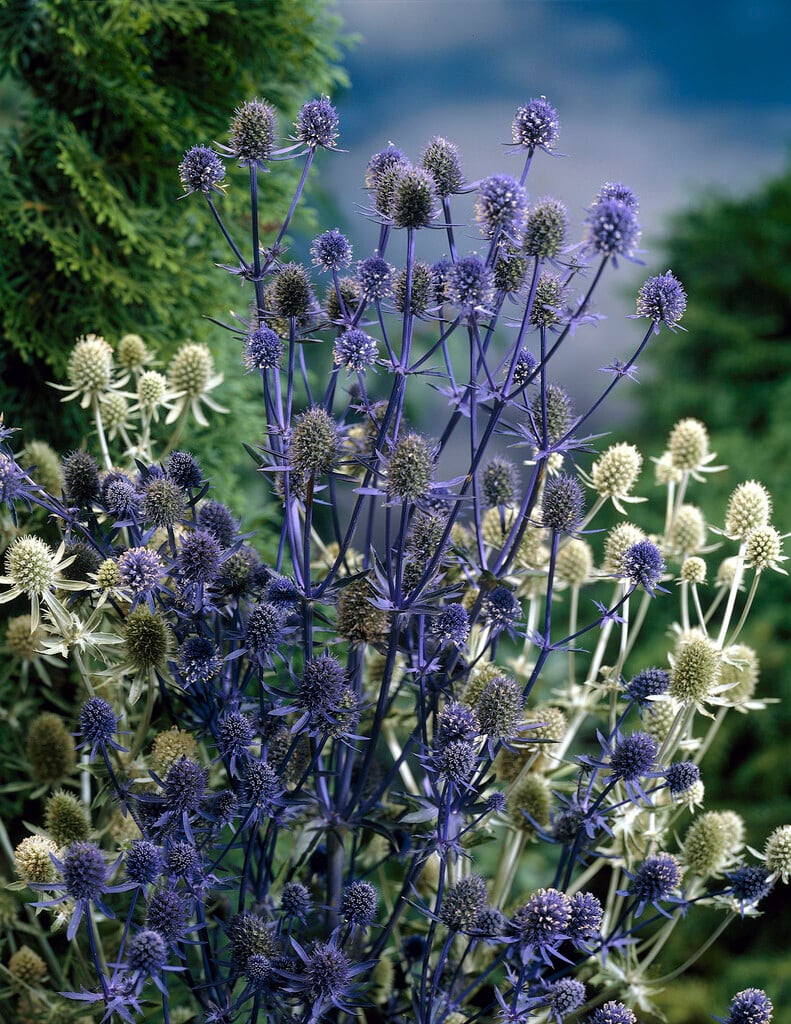Eryngium planum 'Flüela'
blue eryngo 'Flüela'
A robust, clump-forming perennial with erect branched stems and spiny, highly divided silvery-green leaves. Flowering in summer, it has abundant small thimble shaped flower-heads with spiky silver violet-blue bracts which can also be very attractive if left on the plant after the flowering period

Buy this plant
Size
Ultimate height
0.5–1 metresTime to ultimate height
2–5 yearsUltimate spread
0.1–0.5 metresGrowing conditions
Moisture
Well–drainedpH
Acid, Alkaline, NeutralColour & scent
| Stem | Flower | Foliage | Fruit | |
| Spring | Green | |||
|---|---|---|---|---|
| Summer | Blue | Green | ||
| Autumn | Green | |||
| Winter |
Position
- Full sun
Aspect
East–facing or South–facing or West–facing
Exposure
Exposed or ShelteredDrought resistance
Yes Hardiness
H5Botanical details
- Family
- Apiaceae
- Native to GB / Ireland
- No
- Foliage
- Deciduous
- Habit
- Clump forming
- Genus
Eryngium can be annuals, biennials or perennials with simple or divided leaves, often spiny edged, and cone-like flower-heads often surrounded by an involucre of conspicuous spiny bracts
- Name status
Accepted
How to grow
Cultivation
Will grow well in poor, moderately fertile, well-drained soil in full sun avoiding wet winter conditions.
Propagation
Propagate by seed, by root cuttings in late winter and by division in spring
Suggested planting locations and garden types
- Wildlife gardens
- Gravel garden
- Cottage and informal garden
- City and courtyard gardens
- Architectural
- Coastal
- Flower borders and beds
- Cut flowers
Pruning
Cut back any dead foliage throughout the season and but leave spent flowers for winter interest. Cut flowers before they open for floristry purposes.
Pests
May be susceptible to leaf and bud eelworms, and slugs and snails
Diseases
May be susceptible to root rot and powdery mildews
Get involved
The Royal Horticultural Society is the UK’s leading gardening charity. We aim to enrich everyone’s life through plants, and make the UK a greener and more beautiful place.